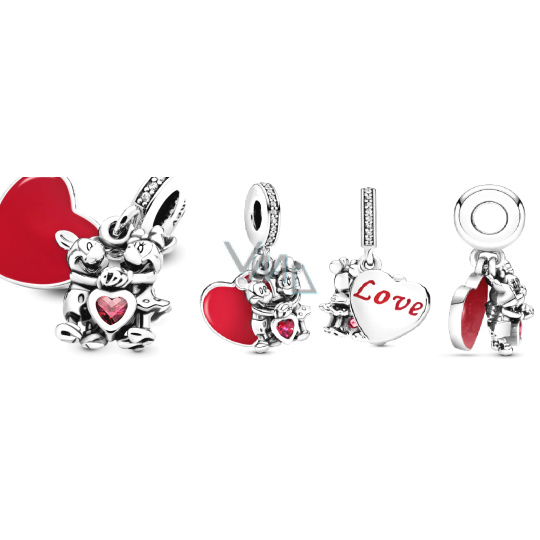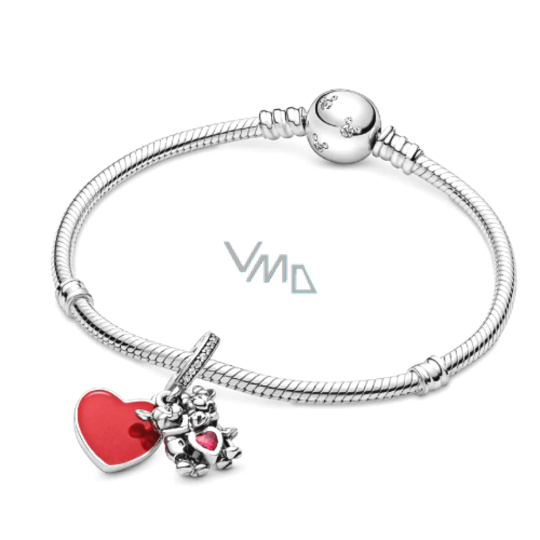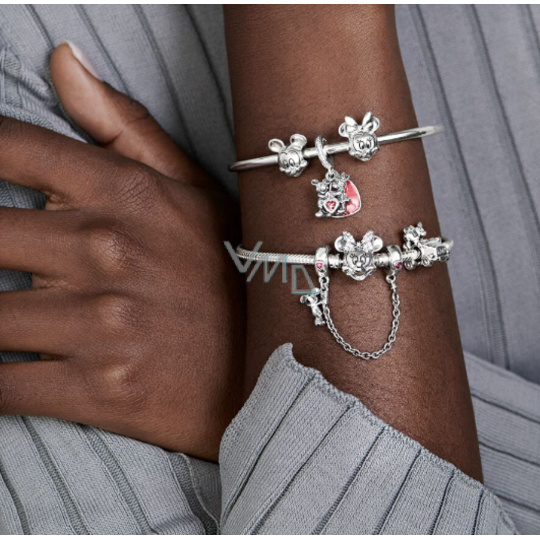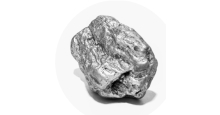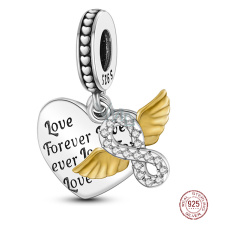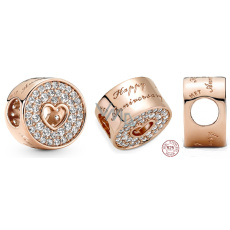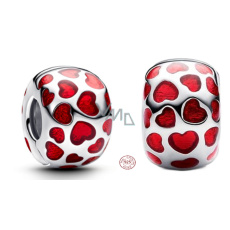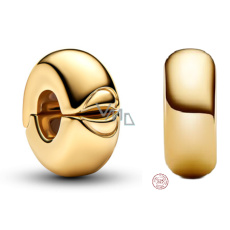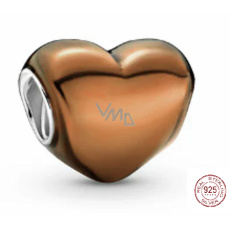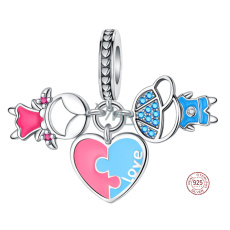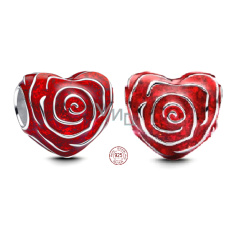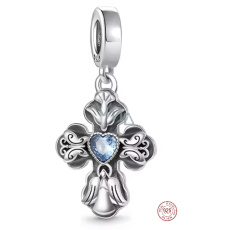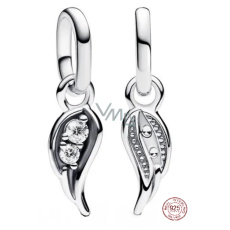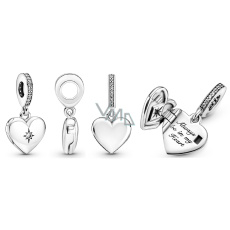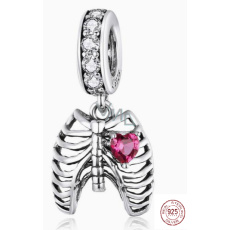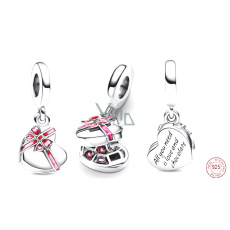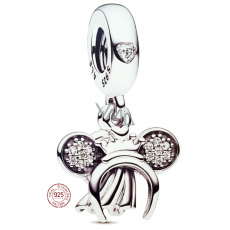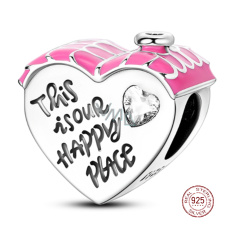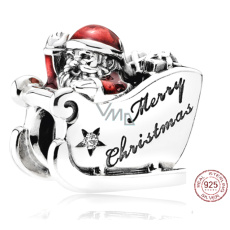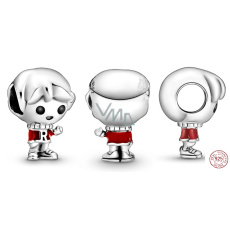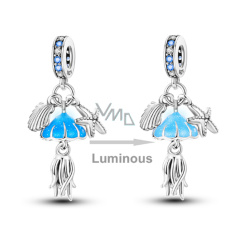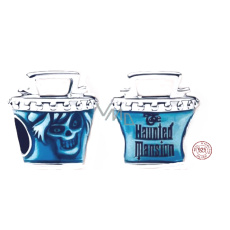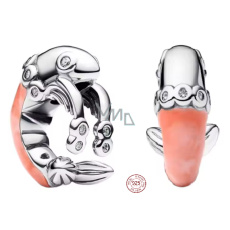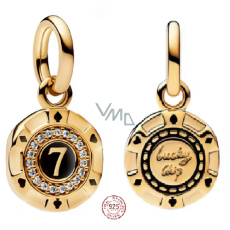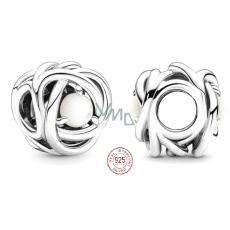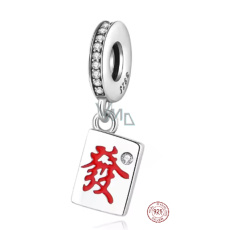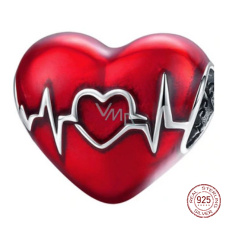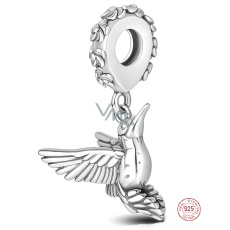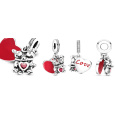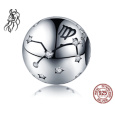Zawieszka ze srebra próby 925 Disney, Zakochana Minnie & Mickey, charms do bransoletki miłości
Zawieszka ze srebra próby 925 Disney, Zakochana Minnie & Mickey, charms do bransoletki miłości
Wdechnij swojemu stylowi miłość z sercami Disney, Mickey Mouse i Minnie, wyrażonymi w tym słodkim charmie. Zawieszka 925 Sterling Silver zdobi serce malowane ręcznie, pokryte czerwoną emalią i błyszczącymi kamieniami z cyrkonii. Noś go, abyś pamiętał o więzi miłości, lub podaruj go wyjątkowej osobie, aby opowiedziała historię miłości.
Pamiętaj, że koraliki nie są całkowicie identyczne ze względu na ręczne wykonanie. Ten czarujący srebrny koralik jest idealnym prezentem dla Ciebie i Twoich bliskich. Zamów już dziś i stwórz własne niezapomniane chwile, które będziesz wspominać przez całe życie. Bądź oryginalny, bądź wyjątkowy!
- srebrny charms - oryginalny design
- najwyższa jakość, ręczne wykonanie
- element do uzupełnienia biżuterii
- charms jest kompatybilny z bransoletkami Pandora, Tedora, Trollbeads
- srebro: 925
- element dekoracyjny: emalia
- głębokość: 7,1 mm
- wysokość: 14,4 mm
- szerokość: 11,6 mm
CZYSZCZENIE SREBRA NA KILKA SPOSOBÓW
1. Folia aluminiowa i sól (10 minut)
- Do miski włóż kawałek folii aluminiowej lub wyłóż dno miski folią aluminiową.
- Następnie do miski wsyp łyżkę stołową soli kuchennej.
- Folię aluminiową i sól zalej gorącą wodą i do powstałej kąpieli włóż całą srebrną biżuterię.
- Kąpiel pozostaw na około 5 minut. (w zależności od stopnia zabrudzenia)
- Po upływie tego czasu wyjmij srebro i opłucz zimną wodą.
- Na koniec osusz biżuterię, najlepiej ściereczką do srebra.
2. Środek do mycia naczyń (5 minut) - odpowiedni dla biżuterii z kamieniami
- Do pojemnika z ciepłą wodą dodaj kroplę środka do mycia naczyń, zamieszaj wodę, możesz włożyć biżuterię do pojemnika na kilka sekund.
- Następnie wyjmij biżuterię i zanurz w powstałych mydlanych bąbelkach kawałek ściereczki i delikatnie ją przetrzyj.
- W ten sposób można delikatnie czyścić również modele osadzone kamieniami, ich otoczenie możesz wyczyścić miękką szczoteczką.
- Gdy biżuteria jest czysta, opłucz ją w zimnej wodzie i wysusz tkaniną.
3. Ocet i soda oczyszczona
- Do miski wsyp 1/2 szklanki octu i 2 łyżki stołowe sody oczyszczonej.
- Następnie zanurz biżuterię w powstałym roztworze.
- Pozostaw na 2-3 godziny.
- Po upływie tego czasu wyjmij srebro i dokładnie opłucz pod bieżącą zimną wodą.
- Na koniec osusz biżuterię, używając miękkiej ściereczki.
4. Proszek do pieczenia
- Przygotuj wilgotną ściereczkę i małą miskę.
- Wymieszaj 1 łyżkę stołową wody i 3 łyżeczki proszku do pieczenia.
- Srebrną biżuterię zawsze zwilż, a następnie nałóż przygotowaną pastę za pomocą ściereczki, która nie gubi włókien.
- Czyść tak długo, aż biżuteria nie będzie czysta. Stopniowo wymieniaj kawałki ściereczki na czyste, aż biżuteria będzie całkowicie pozbawiona brudu.
- Opłucz biżuterię pod zimną wodą i osusz miękką ściereczką.
5. Cytryna i sól - tylko dla biżuterii bez kamieni
- Do małej miski nalej około 2 szklanki gorącej wody.
- Następnie do wody wyciśnij jednego całego cytryna.
- Dodaj 3 łyżki stołowe drobnej soli kuchennej.
- Włóż biżuterię do tej kąpieli i pozostaw na 5 minut zanurzoną.
- Gdy po 5 minutach wyjmiesz biżuterię, ostrożnie osusz ją miękką ściereczką.
6. Coca-cola
- Klasyczną Coca-Colę nalej do połowy średniej wielkości miski i biżuterię po prostu zanurz w niej.
- Pozostaw na 10 minut, aby bąbelki i kwas fosforowy w napoju mogły zadziałać.
- Po upływie tego czasu wyjmij biżuterię, opłucz pod zimną wodą i osusz miękką ściereczką.
7. Pasta do butów
- Przygotuj małą miskę i wyciśnij do niej pastę do butów.
- Weź gąbkę do naczyń i jej delikatniejszą stroną zanurz w pastę do butów.
- Za pomocą gąbki rozprowadź pastę do butów po całej biżuterii.
- Musisz ją rozprowadzić równomiernie, a tam gdzie jest silniej zabrudzona, należy dodać wystarczającą ilość pasty.
- Gdy biżuteria jest całkowicie pokryta pastą do butów, odłóż ją i pozostaw na 10 minut.
- Następnie opłucz biżuterię pod zimną wodą i osusz za pomocą miękkiej, delikatnej ściereczki.
8. Pasta do zębów - bez wybielającego efektu i substancji ściernych
- Nanieś odrobinę pasty na miękką ściereczkę i przyłóż do biżuterii.
- Delikatnymi ruchami zacznij czyścić, przy czym brudną ściereczkę wymieniaj na nową, gdy tylko się zabrudzi.
- Wszystkie ozdoby musisz czyścić tylko czystym kawałkiem materiału.
- Gdy masz już wyczyszczone, opłucz każdą ozdobę ciepłą wodą i osusz miękką ściereczką.
- Jeśli chcesz użyć szczoteczki do zębów z pastą, to tylko miękkiej, aby nie uszkodzić biżuterii.
Materiał: srebro 925/1000
925 Sterling Silver składa się z 92,5% czystego srebra
- to jest najwyższa zawartość i najlepsza jakość
- charms i biżuteria z niższą zawartością są mniej wartościowe i mniej wysokiej jakości, gdyby biżuteria miała jeszcze wyższą zawartość niż 925, srebro byłoby zbyt miękkie, aby można było nosić je jako biżuterię
Wdechnij swojemu stylowi miłość z sercami Disney, Mickey Mouse i Minnie, wyrażonymi w tym słodkim charmie. Zawieszka 925 Sterling Silver zdobi serce malowane ręcznie, pokryte czerwoną emalią i błyszczącymi kamieniami z cyrkonii. Noś go, abyś pamiętał o więzi miłości, lub podaruj go wyjątkowej osobie, aby opowiedziała historię miłości.
Pamiętaj, że koraliki nie są całkowicie identyczne ze względu na ręczne wykonanie. Ten czarujący srebrny koralik jest idealnym prezentem dla Ciebie i Twoich bliskich. Zamów już dziś i stwórz własne niezapomniane chwile, które będziesz wspominać przez całe życie. Bądź oryginalny, bądź wyjątkowy!
- srebrny charms - oryginalny design
- najwyższa jakość, ręczne wykonanie
- element do uzupełnienia biżuterii
- charms jest kompatybilny z bransoletkami Pandora, Tedora, Trollbeads
- srebro: 925
- element dekoracyjny: emalia
- głębokość: 7,1 mm
- wysokość: 14,4 mm
- szerokość: 11,6 mm
